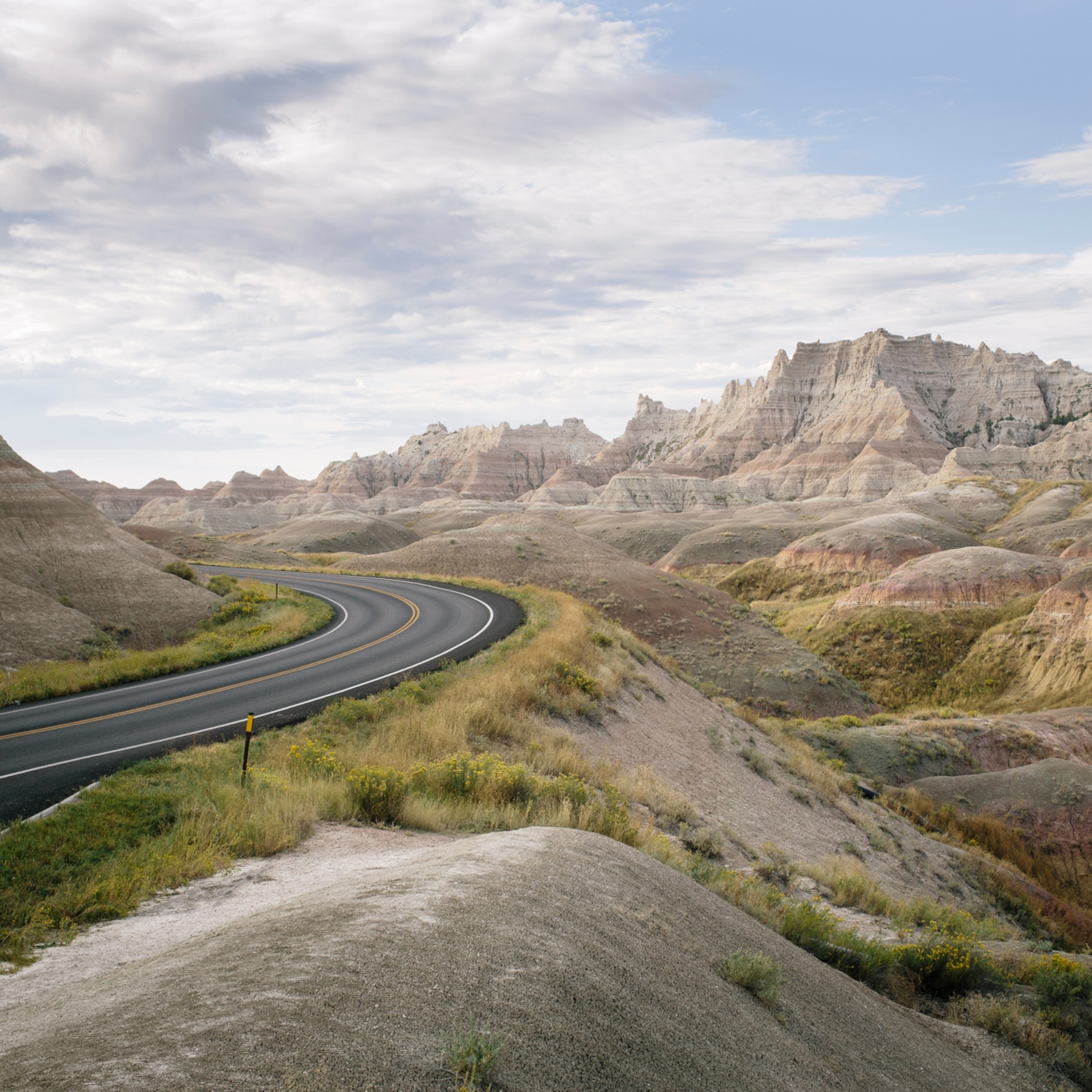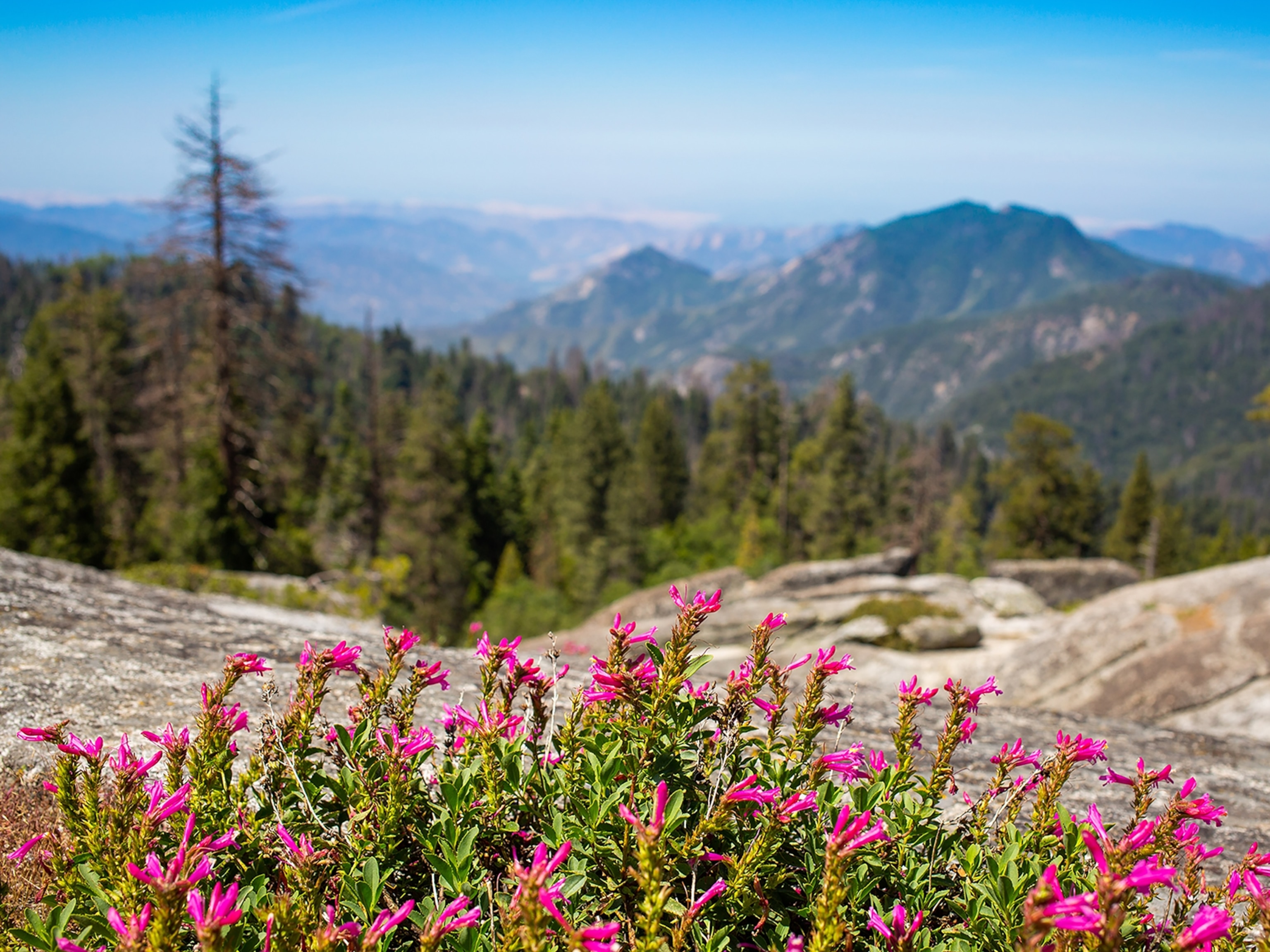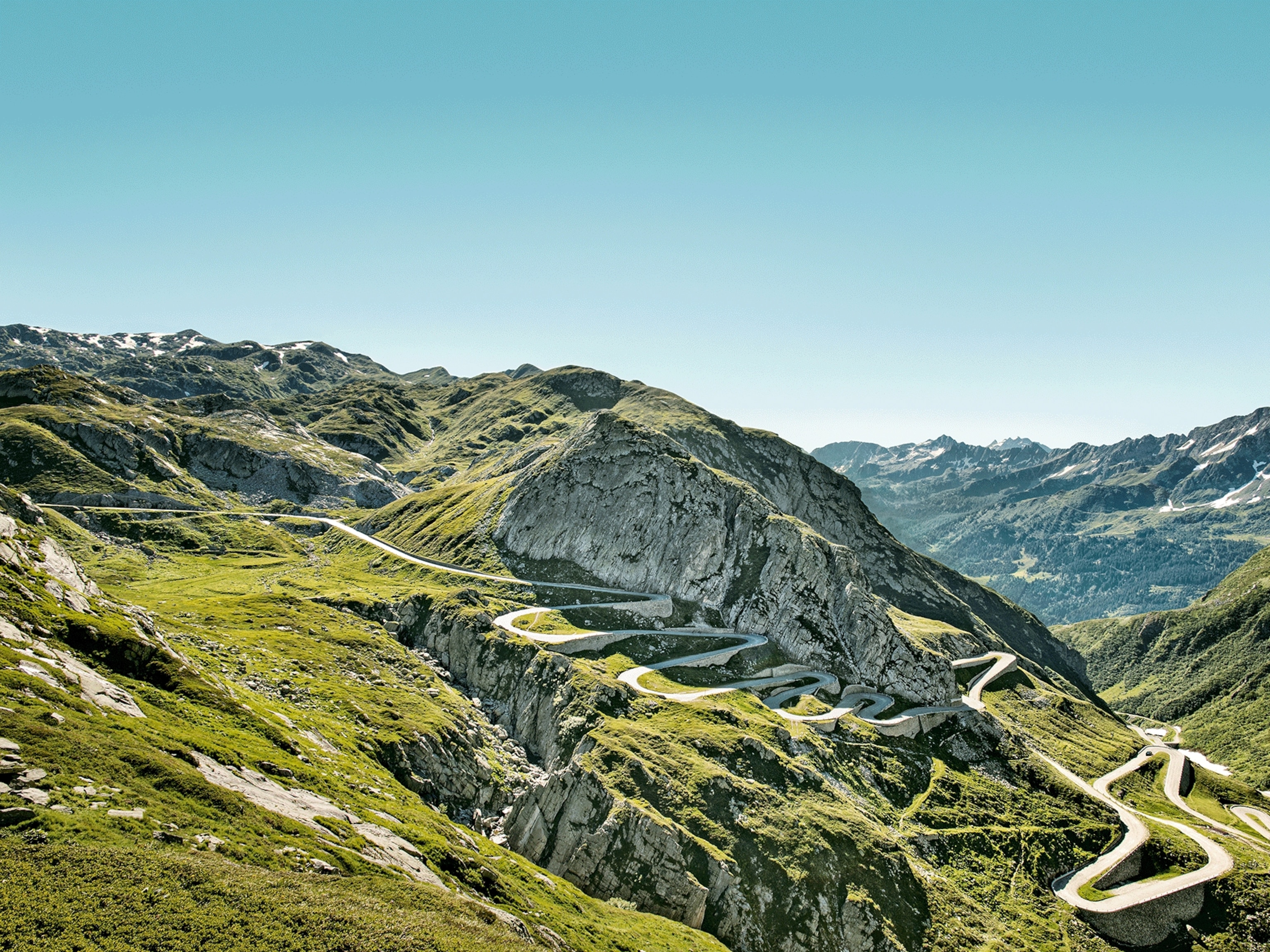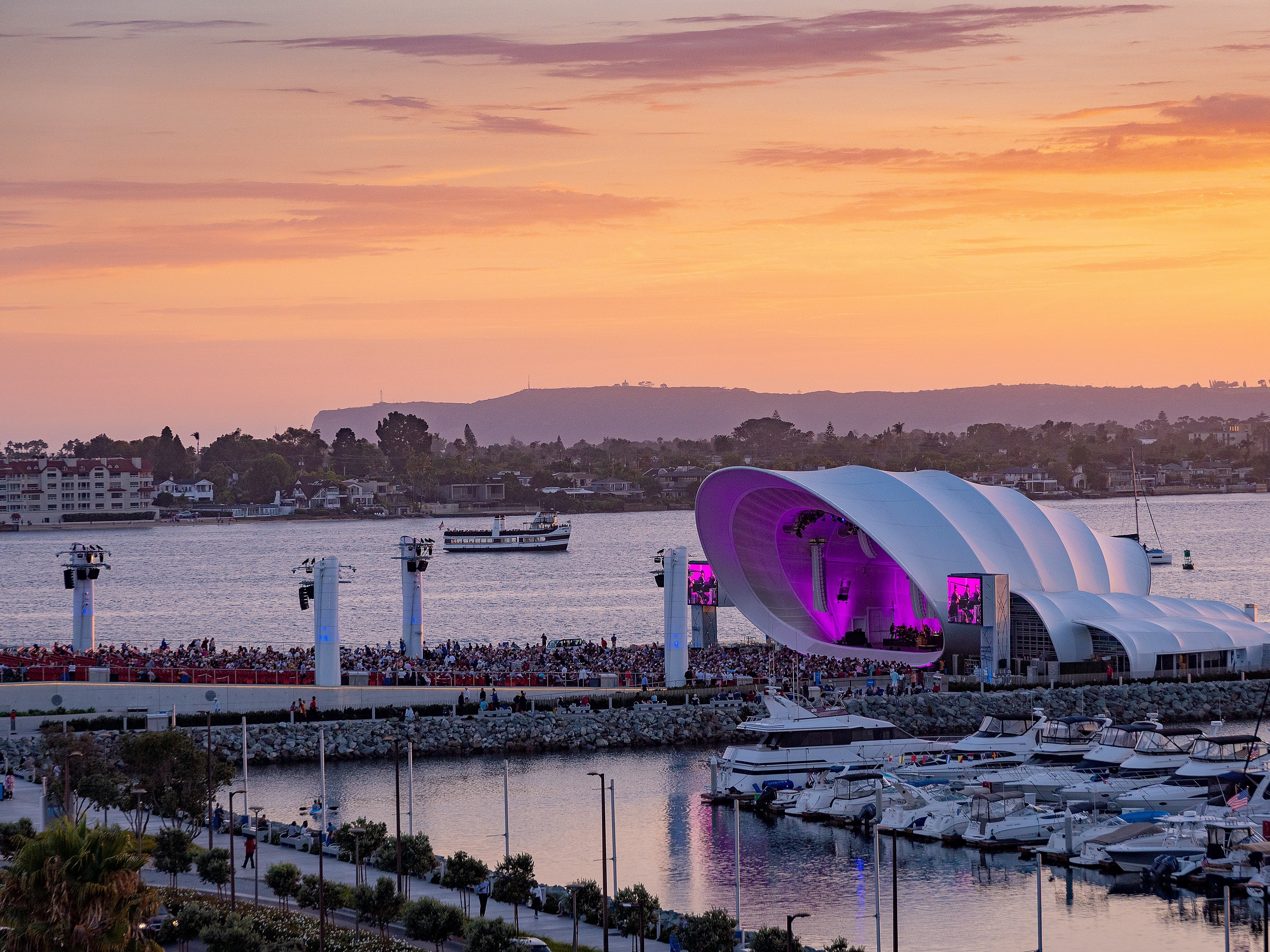
California Road Trip: San Diego to Yosemite
Here's how to find adventure on the road from the Pacific Coast Highway to the High Sierra.
San Diego
San Diego's siren song will tempt you to linger here. The city boasts glorious beaches, varied attractions, and vibrant neighborhoods all basking under sunny skies.
Stay. Visit San Diego's own “island” paradise, Coronado, a trip savvy travelers make by ferry. Once there, rent a bike or kayak or simply relax at a spa. Whatever you decide to do, or not do, don't miss “the Del.” Check in (or at least stop in) to the Hotel del Coronado and soak up the views, along with the fascinating history of this 1888 treasure, which co-starred with Marilyn Monroe in 1959's Some Like It Hot.
Eat. You're sure to work up a hunger and a thirst—and San Diego's got you covered. The city's thriving culinary scene boasts flavors as distinct as the city's neighborhoods and all are enjoyably washed down by the fruits of the area's famed craft beer boom. Try the bustling East Village, a former warehouse district now anchored by the Padres' Petco Park, the historic but far from stodgy Gaslamp Quarter, or Little Italy.
Don't Miss. Your eyes will wander often to San Diego and Mission Bays, so get out on the water. Rent a stand-up paddleboard, sign up for a sailing cruise, or relax on a gondola ride. There's plenty of local wildlife in these waters, and in season you'll even share them with migrating whales—a must-see. Gray whales appear from mid-December to April and blue whales from mid-June to September. Whale-watching tours gear up during these months.
DO:
1. Hit the beach. Enjoy a heavy dose of unique SoCal beach culture at Mission Beach, a long, sandy strip of land stretching between Mission Bay and the Pacific. Mission beach is home to a lively boardwalk scene (complete with roller coaster), where the people-watching can be as wild as the whale-watching.
2. Explore Balboa Park. The park is home to the city's famed zoo and much more. Growing things love this city's agreeable climate, as evidenced by the more than 130 rose varieties at the Inez Grant Parker Memorial Rose Garden. Indoor activities abound, and some call the park's fine collection of museums the “Smithsonian of the West.” While away the hours in the San Diego Museum of Art, San Diego Natural History Museum, Reuben H. Fleet Science Center, or the San Diego Air and Space Museum.
3. See wild SoCal. Torrey Pines State Natural Reserve in San Diego is a rare slice of Southern California coastal wilderness. The park's namesake tree is found nowhere else on the mainland, and the bird-laden salt marshes here have vanished from the rest of SoCal. Walking the reserve's beaches or wandering its headlands opens a window on California's far less populated past.

Pacific Coast Highway
It's always hard to leave San Diego, but the effort is worthwhile when the next destination is one of America's great coastal drives. (Find the must-see spots along the Pacific Coast Highway.)
The Route. The 300-mile (483-kilometer) route from San Diego to Pismo Beach primarily hugs a jaw-dropping coastline that delivers so many “wow” vistas, you'll have to be careful to drive within the lines. Route 1 is definitely an attraction in itself, but it also has enough fascinating stops and side trips to fill many vacations.
Among them, Big Bear Lake deserves special mention. This mountain resort is a jewel, hidden away among pine and oak forests in the refreshing air at up to 9,000 feet (2,743 meters). Though not far from the bustle of Los Angeles, the lake feels like a world apart.
Farther along the route and just north of Pismo Beach, travelers will head through San Luis Obispo County. This portion of the trip offers plenty of worthwhile stopovers, boasting local wineries and stunning beach towns.
Santa Barbara
The Route. Santa Barbara is some 220 miles (354 kilometers) north of San Diego on Route 1.
The city's classic Spanish architecture, agreeable climate, and hilly seaside location mimic many Mediterranean towns and have earned Santa Barbara the nickname “the American Riviera.”
Stay. Splurge on the Spanish colonial idyll known as the Four Seasons Resort the Biltmore Santa Barbara. This very luxurious property features 22 acres of lush gardens and bungalows perched atop Butterfly Beach. Prefer a low-key experience and a chance to meet the locals? Check out the city's many neighborhood inns.
Eat. Raise a glass and feel the funk. The wine country outside Santa Barbara is well worth a visit. Then again, you can sample the fruits of this vinous labor without even leaving downtown. More than two dozen tasting rooms are stops on the walkable Urban Wine Trail, which winds into what's known as the Funk Zone. Wine is far from the only attraction in this hip haven of artists, galleries, restaurants, and other urban delights.
Don't Miss. The Spanish-inspired Santa Barbara County Courthouse's clock tower observation deck provides a panoramic view. And if your eye seeks historic sites, Santa Barbara has some gems. The Santa Barbara Presidio fortress was built by the Spanish in 1782, during the city's beginnings as a Spanish garrison, and the remarkable Santa Barbara Mission has been in continuous use since it was constructed in 1786.
DO:
1. Wander the wharf. Santa Barbara wasn't always a glamorous seaside community. Stearns Wharf, California's oldest working wharf (circa 1872), is an echo of earlier times that's well worth a stroll out over the waves. The wharf still bustles, but much of today's business involves shops, eateries, and a museum catering to the tourist trade.
2. Visit the land of the lotus. The creations of human and nature blend gloriously in Santa Barbara. Ganna Walska Lotusland is a prime example. This historic estate is now a botanical showplace in which visitors can wander through enchanting gardens filled with an amazing variety of plants from around the globe. An esteemed horticulturalist recently dubbed Lotusland one of the world's top 10 gardens.
3. Seek sand and sun. Beaches are the backbone of the city, and most visitors spend at least some time at the ocean's edge. East, West, and Leadbetter beaches have their own charms and are typically humming with activity. Try heading north up the coast to Goleta, where the UC Santa Barbara Gauchos, some of the United States’ truly fortunate college students, enjoy beaches, breweries, and the good life that seems to always be on tap in Santa Barbara.
Pismo Beach

The final coastal jewel on your journey is the classic California beach town of Pismo Beach, just 83 miles (134 kilometers) north of Santa Barbara. Though Yosemite beckons, there's plenty to hold you here for at least a few days before you head for the High Sierra. (Check out the top 10 things to do in Pismo Beach.)
On the Road to Yosemite
The Route. The drive from Pismo Beach to the Yosemite region takes about four hours, and a favorite approach is via Route 140 through Mariposa.
Stay. The Mariposa Hotel Inn dates to 1901 and offers six unique, historic rooms. There's also a delightful garden veranda, where guests fuel up for a day of adventure with breakfast and then laugh while watching the sun go down behind the nearby hills. Out back and below the inn you'll find a hidden gem: the Yosemite Ale Werks tasting room, known as the Stumble Inn. Live music is often on tap here, along with tasty local beers.
Eat. Bett's Gold Coin Sports Tavern is in John C. Fremont's 1850 adobe building, partially rebuilt with brick and stucco after Mariposa's disastrous 1866 fire. It boasts recently restored naval wall murals (circa the turn of the 20th century) and a long history as a local hot spot and gambling hall. Today, the Gold Coin is reborn as a lively tavern, music venue, and restaurant with a varied lunch and dinner menu. Another nearby option is 1850, which describes itself as a traditional steak house with a modern twist and strives to include local ingredients in each meal.
DO:
1. Go back in time. Mariposa's sites and relics are primarily concerned with the glory days of the gold rush. The Mariposa Museum and History Center houses piles of authentic mining machinery, a working blacksmith shop, and exhibits celebrating Chinese immigrants, the Miwok tribe, and hardy California miners.
The nearby Mariposa County Courthouse is the oldest superior courthouse west of the Mississippi, but it's no museum piece. The place has been in regular use since it was built in 1854.
2. Meander along the Merced. Day-use picnic areas—any one of them an excellent option for a relaxing lunch, a cooling swim, or wetting a line—are scattered along the shore of Merced River and parallel Route 140 in Briceburg. When the spring runoff has slowed and the water has warmed, usually by late June, these same spots are ideal for launching a tube or other float in the river.
If one day isn't enough (and it may not be), six different campsites along the river offer options including trailer-accessible and walk-in tent sites, many on or overlooking the water.

3. Stop and smell the flowers. Why take a hike outside of Yosemite? Flower power. Sixty varieties of glorious, glowing wildflowers grow everywhere along the first two miles or so of the Hite Cove Trail as it descends through a canyon to the banks of the south fork of the Merced River. From April through May you'll likely find the flowers out in force here while Yosemite's higher-elevation fields are still covered in snow. Continue for a few miles after the flowers fade to visit the mining ghost town of Hite Cove.
4. Fly through the sky. Teddy Roosevelt said the citizens of the United States should preserve the natural wonders of Yosemite “with their majestic beauty all unmarred.” So no zip lines. Fortunately, about an hour southwest of Yosemite Valley, zip lines are allowed. At Yosemite Ziplines and Adventure Ranch, older kids (70 pounds minimum) and kids at heart can fly through the air on a series of lines constructed as a two-hour guided tour and in an aerial adventure ropes course.
Yosemite National Park
The Route. Yosemite's Arch Rock Entrance is about 30 miles (48 kilometers) along Route 140 from the town of Mariposa. (See more images from Yosemite National Park.)
Stay. Sleep under millions of stars or in a four-diamond hotel. Yosemite's varied choices have one thing in common: They're extremely popular, so book very early. Half Dome Village (formerly Curry Village) has welcomed visitors with cabins and tent cabins in the shadow of Half Dome and Glacier Point since 1899. The Majestic Yosemite Hotel (formerly the Ahwahnee) is a AAA-rated four-diamond gem built in the 1920s that provides a memorable night's sleep.
Eat. With apologies to Jellystone Park, if there's a better picnic spot than Yosemite, that place must be something truly special indeed. Jaw-dropping lookouts abound, enticing visitors to linger and open a basket, and the park service maintains some of the top spots. Looking to grab a simple bite and go? Try the food court in the valley at Yosemite Valley Lodge.
Don't Miss. Towering rock walls and falling water are the essence of Yosemite Valley. Experience them up close with a day hike to Vernal and Nevada Falls. Prepare to get wet if it's spring or the rivers are running full—but that's part of the fun. Hikers on this popular route climb below, beside, and atop the great waterfalls, enjoying an unmatched view of them and unique wider vistas of the valley to boot.

Jaw-Dropping Viewpoint. Yosemite has too many vistas for any one of them to be the best. Still, Glacier Point is on the short list, offering expansive views that include Yosemite Valley, Half Dome, and Yosemite Falls. Drive to Glacier Point from late May until the road is closed by snow. (Or take the free shuttle from Badger Pass, a hassle-free way to get all around the park while easing overcrowding.)
Tour. Yosemite hospitality's bus tours provide an easy and informative way to visit the park's must-see attractions without the stress of fighting traffic. A two-hour tour covers highlights of the valley floor, the Glacier Point tour is a four-hour round-trip, and the Tuolumne Meadows tour is an all-day affair. (Only the valley floor tour operates year-round.) For more specialized interests, check out Yosemite Conservancy's tours for birders, painters, and backpackers.
Do:
- National Geographic Expeditions
1. Scale the dome. You need to secure a permit to attempt the Half Dome Day Hike, a trek so popular it must be protected from overcrowding. But it's not a trip for everyone. The 14-mile (23-kilometer) route includes 4,800 feet (1,463 meters) of elevation gain, the last 400 feet (122 meters) or so are tackled with the aid of fixed cables. Respect the dangers of this hike, particularly the threat of bad weather, and heed rangers' advice. But if your nerve and luck hold, expect a big-time payoff in the kind of rare air often reserved for mountaineers. (Find adventure beyond the Half Dome here.)
2. See the trees. The Mariposa Grove of giant sequoias is undergoing a restoration project that will close the area until the early summer of 2017. If you visit after that date, expect a more natural, asphalt-free experience among the big trees. In the meantime, visiting sequoias requires some well-rewarded effort. Tuolumne Grove's two dozen mature trees require an approximate two-mile round-trip hike, while Merced Grove is a three-mile round-trip. Both hikes descend steeply from their respective trailheads for some 500 vertical feet (152 meters), but remember, what goes down must come back up.
3. Go on—climb a rock. You're in one of the world's foremost climbing destinations, but that doesn't mean you have to tackle El Capitan. There's plenty of rock to satisfy everyone, including world-class climbers and never-evers. The Yosemite Mountaineering School and Guide Service can get you started with lessons and guides for a climb matched to your ability and ambition.
Side Drive. In a place of superlatives, the most celebrated scenic road in Yosemite is probably Tioga Road, a 39-mile (62-kilometer) jaw-dropper. Depending on snowpack, it's open from late May or early June until November and provides motorized access to Yosemite's high country of stunning views and clear mountain lakes. It stretches from Crane Flat to Tioga Pass, and the drive's many highlights include Olmsted Point overlook and Tenaya Lake, but don't miss Tuolumne Meadows. Here, at 8,600 feet (2,621 meters), ribbons of clear water meander through grassy, flowery fields nestled under the high peaks. The scenery rivals any in Yosemite.

Did You Know? It has been estimated that 95 percent of the park's visitors see only the valley floor. Needless to say, leaving it behind to seek out other treasures far from the madding crowd is rewarding indeed.
Before You Come. Read the quotable John Muir's My First Summer in the Sierra.
Seasonal Notes. When to visit? Some insiders say any season but summer, simply because of the park's high-season popularity. Spring is a great alternative. Yosemite's many waterfalls make up one of the best arrays to be seen anywhere on the planet. They're at their best during the spring, when the Sierra snows are “melting into music,” as Yosemite legend John Muir once said. As spring slowly spreads upward from the valley floor, it also gradually awakens a stunning display of some 1,400 different flowering plants.
On the Road From Yosemite
The Route. Exit Yosemite at Big Oak Flat entrance station—but don't head home. Route 120 leads to more local adventure. (Here's the activities to find in Tuolumne County.)
Stay. Rush Creek Lodge opened this summer as the first new resort at Yosemite in more than 25 years—and it appears to have been worth the wait, with amenities like a large saltwater pool, family and adults-only hot tubs, and fire pits. Just a half mile from the park entrance on Route 120, this modern lodge's rooms and villas are convenient to both Yosemite Valley and the Hetch Hetchy area, and the hotel arranges a host of guided options for exploring the park.

Eat. Groveland's Iron Door Saloon claims to be the oldest continually operating saloon in California. After passing through the establishment's namesake doors, you'll find simple pub-style fare here washed down with a hefty helping of atmosphere, courtesy of old photos, memorabilia, and a ceiling full of well-worn dollar bills.
DO:
1. Strike gold. There's (still) gold in them thar hills! At Columbia State Historic Park, the gold rush era remains alive and kicking, housed in the biggest collection of historic, gold rush-era buildings in California. Ride a stagecoach, chat with reenactors, pan for gold, or visit a 19th-century ice-cream parlor to enjoy a local sarsaparilla. At Railtown 1897 State Historic Park, just 15 minutes down the road, you can ride behind a vintage steam locomotive like the one seen in the Western High Noon.
2. Get wet. Outfitters like All-Outdoors California Whitewater Rafting can accommodate trips from a few hours to a few days, leisurely floats to adrenaline-pumping white water like the Class V Cherry Creek. All trips feature the unique views you get only from water level. Rivers run according to Mother Nature's whims, but trips of some type are usually on from April to September.
3. Saddle up. The West is horse country, and there's no better way to explore it than from the saddle. Outfitters lead trips of all types and lengths into the Stanislaus National Forest's Emigrant Wilderness, a playground of peaks, meadows, streams, and roadless splendor. The folks at Aspen Meadow Pack Station have been doing it since 1929. Mules take care of all the heavy lifting, so you're free to relax or ride on in search of further adventures like backcountry trout fishing.
4. Head 'em off at the pass. Between Sonora and Sonora Pass, Highway 108 climbs more than 7,500 feet (2,286 meters) in just 65 miles (105 kilometers), gradually rising up from the foothills, through the forests, and, during the warmer months, into an alpine region of rock and snow. Don't miss the lookout at Donnell Vista. This sweet spot boasts a commanding view of the reservoir below, nestled in a dramatic gorge with steep granite walls, waterfalls, and even a rock dome that remind some of Yosemite Valley itself.







